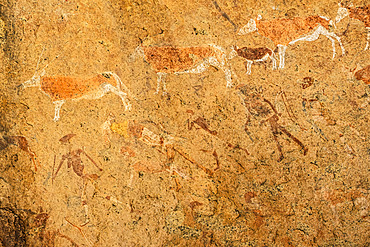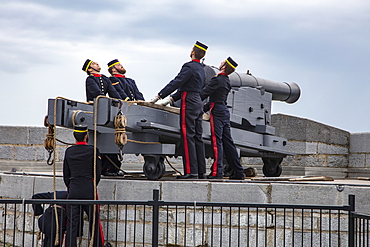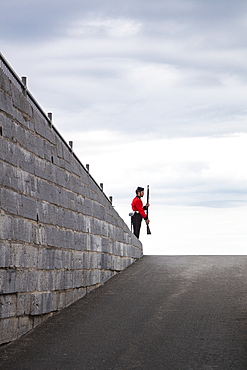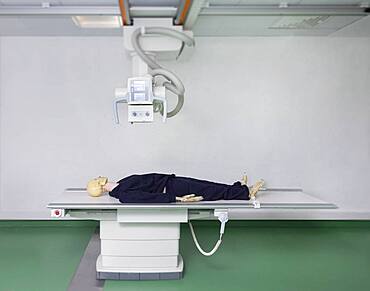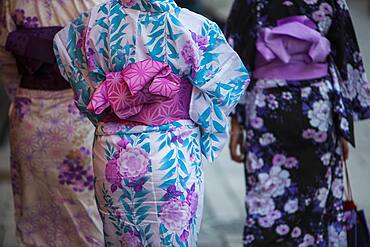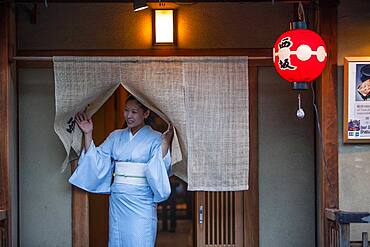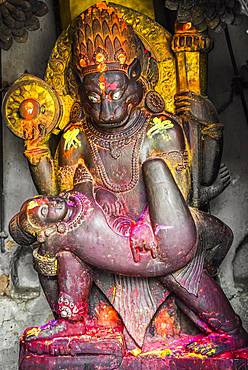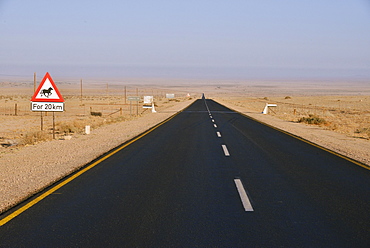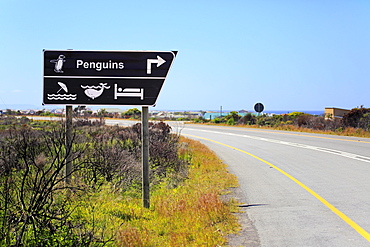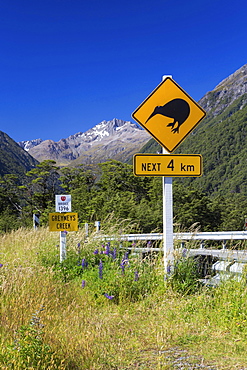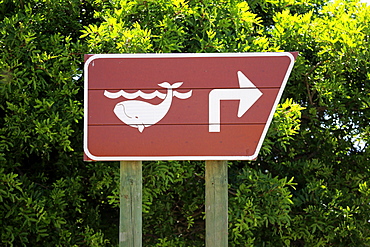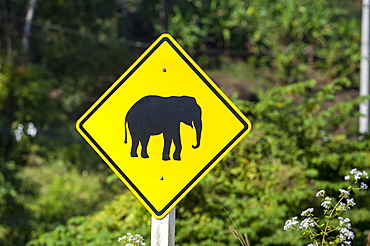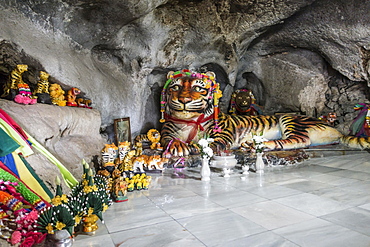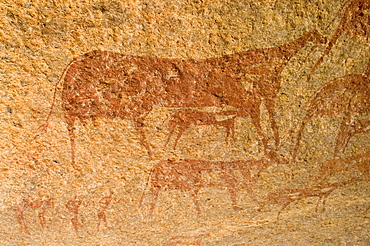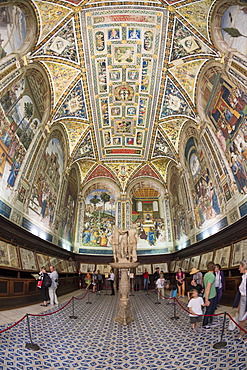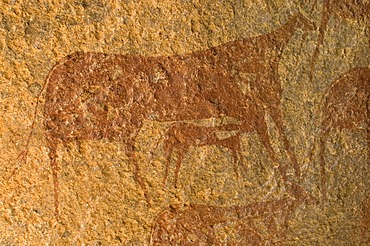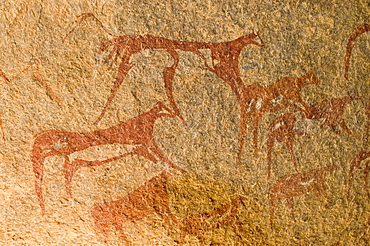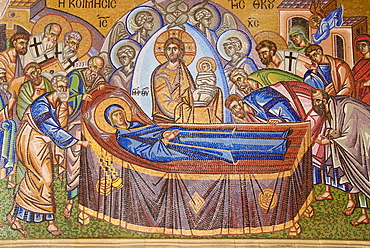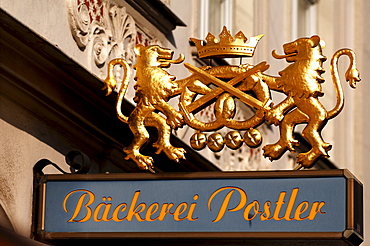Recent searches
Loading...
832-395676 - Theatre Square with Semper Opera House and Equestrian Monument at Dusk, Dresden, Saxony, Germany, Europe
832-395465 - Mural with girl and stairs, Asilah, Northern Morocco, Tangier-Tetouan-Al Hoceima region, Morocco, Africa
832-395417 - Typical Portuguese tile painting with saint motifs at the house entrances, Porto Formoso, Sao Miguel Island, Azores, Portugal, Europe
832-395420 - Typical Portuguese tile painting with saint motifs at the house entrances, Porto Formoso, Sao Miguel Island, Azores, Portugal, Europe
832-395363 - Thangka, old hand-painted scroll painting from the Himalayas
832-395210 - Venomous fangs of a spider, macro photo, magnification ABM 40:1, Hesse, Germany, Europe
832-395419 - Typical Portuguese tile painting with saint motifs at the house entrances, Porto Formoso, Sao Miguel Island, Azores, Portugal, Europe
832-395418 - Typical Portuguese tile painting with saint motifs at the house entrances, Porto Formoso, Sao Miguel Island, Azores, Portugal, Europe
832-395416 - Typical Portuguese tile painting with saint motifs at the house entrances, Porto Formoso, Sao Miguel Island, Azores, Portugal, Europe
1348-5357 - Representation of adult stem cells, multipotential progenitors, and committed precursors.
1348-5306 - The Munsell colour tree, a 3-D representation of the Munsell system, which defines colours by scales of hue, value, and chroma.
1116-51403 - Flags of the world at the entrance of Salar de Uyuni; Potosi, Bolivia
1116-51499 - The White Lady rock painting, Brandberg Mountain, Damaraland; Kunene Region, Namibia
1116-51498 - The White Lady rock painting, Brandberg Mountain, Damaraland; Kunene Region, Namibia
1113-107283 - Firing historic cannons at Fort Henry Historic Site and Museum of Living History with uniformed performers known as the Fort Henry Guard performing British military life demonstrations and tours for visitors, Kingston, Ontario, Canada, North America
1113-107198 - Firing historic cannons at Fort Henry Historic Site and Museum of Living History with uniformed performers known as the Fort Henry Guard performing British military life demonstrations and tours for visitors, Kingston, Ontario, Canada, North America
1113-106913 - Uniformed performers known as the Fort Henry Guard lead British military life demonstrations and tours for visitors to Fort Henry Historic Site and Living History Museum, Kingston, Ontario, Canada, North America
1350-2688 - Verges, a small town in the Northeast of Catalonia (Spain), during Easter celebrates the Procession of Verges with skeletons dancing on the sound of a drum, Roman soldiers, known as the 'Manages', and a representation of the life and crucifixion of Jesus Christ. The Procession features the Dance of Death, a tradition from the Middle Age associated with epidemics and plagues and the only one remaining in Spain Ten skeletons dance to the beat of a drum to remember that no one is exempt of death. The backdrop of the medieval walls and towers of Verges is key to this macabre staging.
1350-2693 - Verges, a small town in the Northeast of Catalonia (Spain), during Easter celebrates the Procession of Verges with skeletons dancing on the sound of a drum, Roman soldiers, known as the 'Manages', and a representation of the life and crucifixion of Jesus Christ. The Procession features the Dance of Death, a tradition from the Middle Age associated with epidemics and plagues and the only one remaining in Spain Ten skeletons dance to the beat of a drum to remember that no one is exempt of death. The backdrop of the medieval walls and towers of Verges is key to this macabre staging.
1350-2692 - Verges, a small town in the Northeast of Catalonia (Spain), during Easter celebrates the Procession of Verges with skeletons dancing on the sound of a drum, Roman soldiers, known as the 'Manages', and a representation of the life and crucifixion of Jesus Christ. The Procession features the Dance of Death, a tradition from the Middle Age associated with epidemics and plagues and the only one remaining in Spain Ten skeletons dance to the beat of a drum to remember that no one is exempt of death. The backdrop of the medieval walls and towers of Verges is key to this macabre staging.
1350-2695 - Verges, a small town in the Northeast of Catalonia (Spain), during Easter celebrates the Procession of Verges with skeletons dancing on the sound of a drum, Roman soldiers, known as the 'Manages', and a representation of the life and crucifixion of Jesus Christ. The Procession features the Dance of Death, a tradition from the Middle Age associated with epidemics and plagues and the only one remaining in Spain Ten skeletons dance to the beat of a drum to remember that no one is exempt of death. The backdrop of the medieval walls and towers of Verges is key to this macabre staging.
1350-2690 - Verges, a small town in the Northeast of Catalonia (Spain), during Easter celebrates the Procession of Verges with skeletons dancing on the sound of a drum, Roman soldiers, known as the 'Manages', and a representation of the life and crucifixion of Jesus Christ. The Procession features the Dance of Death, a tradition from the Middle Age associated with epidemics and plagues and the only one remaining in Spain Ten skeletons dance to the beat of a drum to remember that no one is exempt of death. The backdrop of the medieval walls and towers of Verges is key to this macabre staging.
1350-2691 - Verges, a small town in the Northeast of Catalonia (Spain), during Easter celebrates the Procession of Verges with skeletons dancing on the sound of a drum, Roman soldiers, known as the 'Manages', and a representation of the life and crucifixion of Jesus Christ. The Procession features the Dance of Death, a tradition from the Middle Age associated with epidemics and plagues and the only one remaining in Spain Ten skeletons dance to the beat of a drum to remember that no one is exempt of death. The backdrop of the medieval walls and towers of Verges is key to this macabre staging.
1350-2687 - Verges, a small town in the Northeast of Catalonia (Spain), during Easter celebrates the Procession of Verges with skeletons dancing on the sound of a drum, Roman soldiers, known as the 'Manages', and a representation of the life and crucifixion of Jesus Christ. The Procession features the Dance of Death, a tradition from the Middle Age associated with epidemics and plagues and the only one remaining in Spain Ten skeletons dance to the beat of a drum to remember that no one is exempt of death. The backdrop of the medieval walls and towers of Verges is key to this macabre staging.
1350-2689 - Verges, a small town in the Northeast of Catalonia (Spain), during Easter celebrates the Procession of Verges with skeletons dancing on the sound of a drum, Roman soldiers, known as the 'Manages', and a representation of the life and crucifixion of Jesus Christ. The Procession features the Dance of Death, a tradition from the Middle Age associated with epidemics and plagues and the only one remaining in Spain Ten skeletons dance to the beat of a drum to remember that no one is exempt of death. The backdrop of the medieval walls and towers of Verges is key to this macabre staging.
1350-2696 - Verges, a small town in the Northeast of Catalonia (Spain), during Easter celebrates the Procession of Verges with skeletons dancing on the sound of a drum, Roman soldiers, known as the 'Manages', and a representation of the life and crucifixion of Jesus Christ. The Procession features the Dance of Death, a tradition from the Middle Age associated with epidemics and plagues and the only one remaining in Spain Ten skeletons dance to the beat of a drum to remember that no one is exempt of death. The backdrop of the medieval walls and towers of Verges is key to this macabre staging.
1350-2697 - Verges, a small town in the Northeast of Catalonia (Spain), during Easter celebrates the Procession of Verges with skeletons dancing on the sound of a drum, Roman soldiers, known as the 'Manages', and a representation of the life and crucifixion of Jesus Christ. The Procession features the Dance of Death, a tradition from the Middle Age associated with epidemics and plagues and the only one remaining in Spain Ten skeletons dance to the beat of a drum to remember that no one is exempt of death. The backdrop of the medieval walls and towers of Verges is key to this macabre staging.
1350-2694 - Verges, a small town in the Northeast of Catalonia (Spain), during Easter celebrates the Procession of Verges with skeletons dancing on the sound of a drum, Roman soldiers, known as the 'Manages', and a representation of the life and crucifixion of Jesus Christ. The Procession features the Dance of Death, a tradition from the Middle Age associated with epidemics and plagues and the only one remaining in Spain Ten skeletons dance to the beat of a drum to remember that no one is exempt of death. The backdrop of the medieval walls and towers of Verges is key to this macabre staging.
1174-10290 - Mannequin under an x ray machine in a healthcare college
1174-10289 - Mannequin under an x ray machine in a healthcare college
1350-1057 - Street scene in Hanamikoji dori street.Geisha's distric of Gion.Kyoto. Kansai, Japan.
1350-1059 - Women wearing kimono.Street scene in Hanamikoji dori street.Geisha's distric of Gion.Kyoto. Kansai, Japan.
1350-1720 - Cardiff Castle, detail of mosaic in the Nursery; representation of Robinhood and his companions, Cardiff, Wales
1350-942 - Representation, Ramayana epic, Bas-relief carvings, in Bayon temple, Angkor Thom, Angkor, Siem Reap, Cambodia
1350-1058 - woman inviting passersby to enter into her restaurant.
1113-103541 - Ten Thousand Arm Buddha Performance,Aboard MV Victoria Queen, Victoria Cruises, Yangtze River, China
832-387494 - Relief of the Virgin Mary, representation of the Virgin Mary hiding the faithful under her spread cloak, Venice, Veneto, Italy, Europe
832-384028 - Hindu god representation, Kathmandu, Himalaya region, Nepal, Asia
1116-47838 - White statues representing Christ's crucifixion, Ballyferriter, County Kerry, Ireland
832-382469 - Representation of the traditional cock fight in the Pura Taman Ayun temple, national shrine, Bali, Indonesia, Asia
832-382309 - Road through the desert with a warning sign Attention horses, near Aus, Karas Region, Namib, Namibia, Africa
832-381977 - Direction signs, penguins and whale watching, Betty's Bay, Western Cape, South Africa, Africa
832-381509 - Road sign caution elephants, elephant camp, Phuket Province, Thailand, Asia
832-381153 - Warning sign, "Kiwis next 4km" at Greyneys Creek, looking towards Mt. Oates, 2041m, Canterbury Region, New Zealand, Oceania
832-381978 - Direction sign, whale watching, Betty's Bay, Western Cape, South Africa, Africa
832-381840 - Dragon fountain at dusk on the promenade in Songkhla, Thailand, Asia
832-381781 - Warning sign, "Kiwis next 4km" at Greyneys Creek, looking towards Mt. O'Malley, 1703m, and Mt. Oates, 2041m, Canterbury Region, New Zealand, Oceania
832-381572 - Street sign, pictogram of an elephant, northern Thailand, Thailand, Asia
832-381382 - Warning sign for crocodiles and swimming ban, on the shore, iSimangaliso Wetland Park, Lake St. Lucia, Elephant Coast, KwaZulu-Natal, South Africa, Africa
832-381174 - Statue of Kinnari, traditional symbol of feminine beauty, at Wat Phra Kaeo, the Royal Grand Palace, Bangkok, Thailand, Asia
832-380257 - Seaplane in Great Barrier Reef Marine Park, Whitsunday Islands National Park, Whitsunday Islands, Queensland, Australia, Oceania
832-380081 - Worship of a tiger sculpture in the Tiger Cave, Tiger Cave Temple, Wat Tham Suea, Krabi Province, Thailand, Asia
832-380311 - Papua Diving Resort, Raja-Ampat, Kri, Dampier Strait, Western New Guinea, Indonesia, Asia
851-644 - Japanese girls dressed as flamingos at the Halloween celebrations in Shibuya, Tokyo, Japan, Asia
848-1181 - Interior of St. Stephen's Basilica (Szent Istvan-bazilika), Budapest, Hungary, Europe
832-378533 - Mask wearer, Hindu Vaishnava monastery on the island of Majuli, Brahmaputra, Assam, India, Asia
1178-25475 - George Washington Statue, USA, Massachusetts, Boston, George Washington Statue
1178-25476 - George Washington Statue, USA, Massachusetts, Boston, George Washington Statue
860-284496 - Representation Elephant, Rajasthan India
860-284495 - Motorcyclist and modern representation of Ganesh, Rajasthan India
832-377265 - Prehistoric rock painting at Jebel Uweinat, Jabal al Awaynat
832-377302 - Prehistoric rock painting at Jebel Uweinat, Jabal al Awaynat, Libya
832-377307 - Prehistoric rock painting at Jebel Uweinat, Jabal al Awaynat, Libya
832-371056 - Steeple, Catholic Parish Church of St. Peter and Paul, Mittenwald, Werdenfelser Land region, Upper Bavaria, Bavaria, Germany, Europe, PublicGround
832-369462 - Interior view, south view of the Cathedral Library, Libreria Piccolomini, Cathedral of Siena, Cattedrale di Santa Maria Assunta, main church of the city of Siena, Tuscany, Italy, Europe
832-109159 - Neolithic rock art, elephant engraving, of the Tadrart, Tassili n'Ajjer National Park, Unesco World Heritage Site, Algeria, Sahara, North Africa
832-368567 - Picture of Ernesto "Ché" Guevara, picture sale, poster, oil paintings, gallery, town centre of Havana, Centro Habana, Cuba, Greater Antilles, Caribbean, Central America, America
832-372069 - Mosaic, ancient palace, Zippori National Park, Israel, Middle East
832-372066 - Floor mosaic, Church of the Beatitudes, site of the Sermon on the Mount, Sea of Galilee, Israel, Middle East
832-377316 - Indian or native american rock art, Colorado River Canyon near Moab, Utah, USA
832-377368 - Mani wall, Mani stone, Dudh Kosi valley, Solukhumbu, Khumbu, Sagarmatha National Park, Nepal
832-377270 - Prehistoric rock painting at Jebel Uweinat, Jabal al Awaynat
832-374763 - Petroglyphs carved into sandstone, representation of Fremont, Anasazi, Navajo and Anglo-Saxon cultures, prehistoric and historic rock art, Newspaper Rock State Historic Monument and Recreation Site, San Juan County, Utah, United States of America, USA
832-372071 - Orthodox Jew writing a Torah scroll, sculpture at the Diaspora Museum, Beth Hatefutsoth, Tel Aviv, Israel, Middle East
832-372097 - Ceiling design, Vatican Museums, Rome, Italy, Europe
832-377286 - Shops in the tourist bazaar, souk, of Tripolis, Tripoli, Libya
832-377365 - Mani wall, Mani stone, Dudh Kosi valley, Solukhumbu, Khumbu, Sagarmatha National Park, Nepal
832-371705 - Hanging sign of a traditional costume shop, Residenzplatz square, Salzburg, Austria, Europe
832-372098 - Portrait of Michelangelo, detail from the painting, The School of Athens by Raphael, Stanza della Signatura, Vatican Museums, Rome, Italy, Europe
832-372101 - Dome of St. Peter's Basilica, Vatican, Rome, Italy, Europe
832-372067 - Floor mosaic, Church of the Beatitudes, site of the Sermon on the Mount, Sea of Galilee, Israel, Middle East
832-374140 - Memorial plaque, Albert Einstein, Ulm, Baden-Wuerttemberg, Germany, Europe
832-372099 - Fresco by Raphael, Stanza dell'Incendio di Borgo, Vatican Museums, Vatican, Rome, Italy, Europe
832-371709 - Hanging sign with figures in traditional costume of a children's costume shop, Salzburg, Salzburg province, Austria, Europe
832-372065 - Floor mosaic, Church of the Beatitudes, site of the Sermon on the Mount, Sea of Galilee, Israel, Middle East
832-377266 - Prehistoric rock painting at Jebel Uweinat, Jabal al Awaynat
832-377271 - Prehistoric rock painting at Jebel Uweinat, Jabal al Awaynat
832-342326 - Detail, wall mural painting, Palacio Nacional Palace, Zocalo, Mexico City, Mexico, Central America
832-349477 - Munich, GER, 01. Jun. 2005 - Old Townhall will toy museum inside in Munich, view from Marienplatz.
832-341623 - Lueftlmalerei, painting, Mittenwald, Werdenfelser Land, Upper Bavaria, Germany, Europe
832-346651 - Ceramic representation of the Holy Week procession, Semana Santa, Seville, Andalusia, Spain
832-349138 - Wall mosaic, Archbishop Makarios, novice, Kykko Monastery, Cyprus
832-342327 - Detail, wall mural painting, Palacio Nacional Palace, Zocalo, Mexico City, Mexico, Central America
832-338868 - Painting for the Guesthouse Zum Elephant, Ribeauvillee, Alsace, France, Europe
832-338927 - Sign above a bakery showing two lions holding a pretzel, Bamberg, Upper Franconia, Bavaria, Germany, Europe
832-338676 - "Lueftlmalerei, " traditionally painted building facade, Alte Post Inn, Oberammergau, Upper Bavaria, Bavaria, Germany, Europe
832-338677 - "Lueftlmalerei, " traditionally painted building facade, Alte Post Inn, Oberammergau, Upper Bavaria, Bavaria, Germany, Europe
832-338678 - "Lueftlmalerei, " traditionally painted building facade, Alte Post Inn, Oberammergau, Upper Bavaria, Bavaria, Germany, Europe












